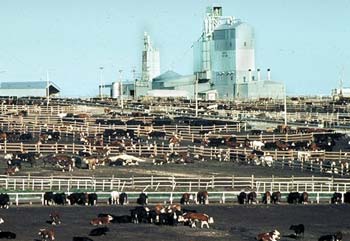All fats are not equal.
And just so we're clear, the terms "fats" and "oils" are often used interchangeably, but fat is more correctly considered solid at room temperature, while oils are liquid. But what's really important is the structure.
The unique health benefits of coconut oil are directly related to its chemical structure, or more precisely, the length of its fatty acid chains.
Coconut oil is comprised of medium-chain fatty acids (MCFAs), also called medium-chain triglycerides or MCTs.
Coconut oil is nature's richest source of these healthy MCFAs.
By contrast, most common vegetable or seed oils are comprised of long chain fatty acids (LCFAs), also known as long-chain triglycerides or LCTs.
There are several reasons to explain why these long-chain fatty acids are not as healthy for you as the MCFAs in coconut oil:
LCFAs are difficult for the body to break down -- they must be packaged with lipoproteins or carrier proteins and require special enzymes for digestion.
LCFAs put more strain on the pancreas, the liver and the entire digestive system.
LCFAs are predominantly stored in the body as fat. (That's why most people buy into the myth that fats are automatically "fattening".)
LCFAs can be deposited within arteries in lipid forms such as cholesterol.
On the other hand, however, the MCFAs in coconut oil are more health-promoting, because:
MCFAs are smaller. They permeate cell membranes easily, and do not require lipoproteins or special enzymes to be utilized effectively by your body.
MCFAs are easily digested, thus putting less strain on your digestive system. This is especially important for those of you with digestive or metabolic concerns.
MCFAs are sent directly to your liver, where they are immediately converted into energy rather than being stored as fat.
MCFAs in coconut oil can actually help stimulate your body's metabolism, leading to weight loss.
The many benefits of coconut oil are finally reaching the mainstream.
Benefits like:
Promoting your heart health
Promoting weight loss when and if you need it
Supporting your immune system health
Supporting a healthy metabolism
Providing you with an immediate energy source
Helping to keep your skin healthy and youthful looking
Supporting the proper functioning of your thyroid gland
I have two oils that I use in food preparation.
The first, extra-virgin olive oil, is a better monounsaturated fat. It works great as a salad dressing.
However, it is not the best oil to cook with. Due to its chemical structure, cooking makes it susceptible to oxidative damage.
And polyunsaturated fats, which include common vegetable oils such as corn, soy, safflower, sunflower and canola, are absolutely the worst oils to use in cooking. These omega-6 oils are highly susceptible to heat damage because of all the double bonds they have.
Right after I started learning about real food from
Dr. Heidi Dulay I decided to throw out the omega-6 vegetable oils in my cabinets. Why?
They contribute to the overabundance of omega-6 fats in your diet, and the imbalance of the omega-6 to omega-3 ratio.
There is only one oil that is stable enough to resist heat-induced damage, while it also helps you promote heart health, maintain normal cholesterol levels and even supports weight loss -- coconut oil.
So, whenever you need an oil to cook with, use coconut oil instead of butter, olive oil, vegetable oil, margarine, or any other type of oil called for in recipes. Even though I don't fully recommend frying foods, if you must fry, by all means use coconut oil -- it's your smartest choice.
Curiously, coconut oil contains the most saturated fat of all edible oils. We continue to be inundated by media portrayals of saturated fats as dangerous, but now you know better. And now you should have more peace of mind, knowing that you're making the right choice by using great-tasting organic coconut oil or the expeller coconut oil that is great for cooking when you don't want the coconut flavor.
Next- Coconut Oil, dieters best friend
Real Food with Dr. Heidi Dulay -
Little SpaMy
Whole Food Nation website.
Good Food Making You Fat Video w/Dr. Heidi
Email Robin Here




 Little Spa
Little Spa














